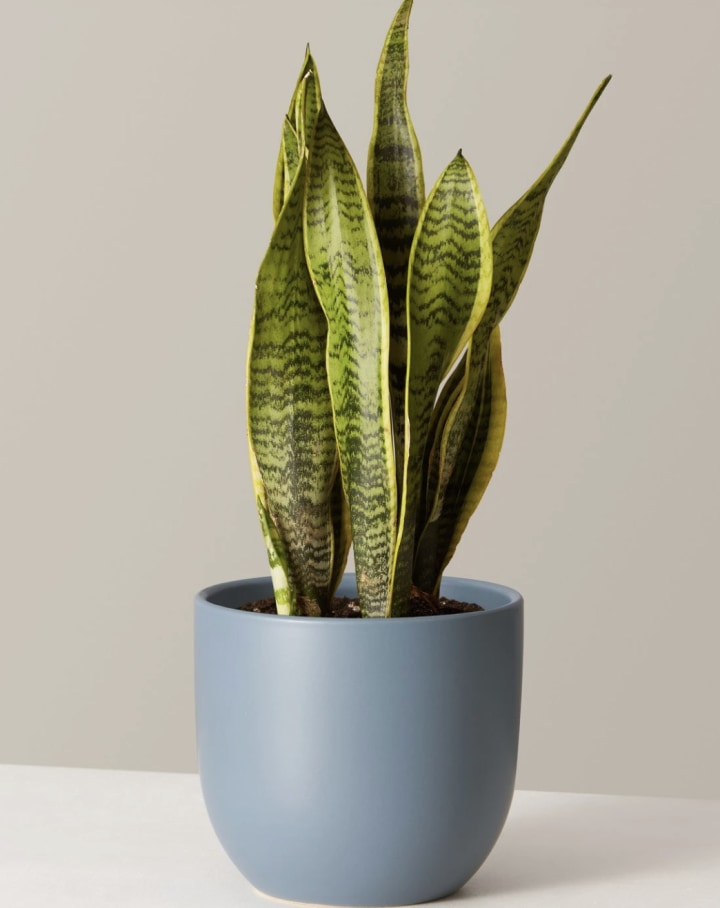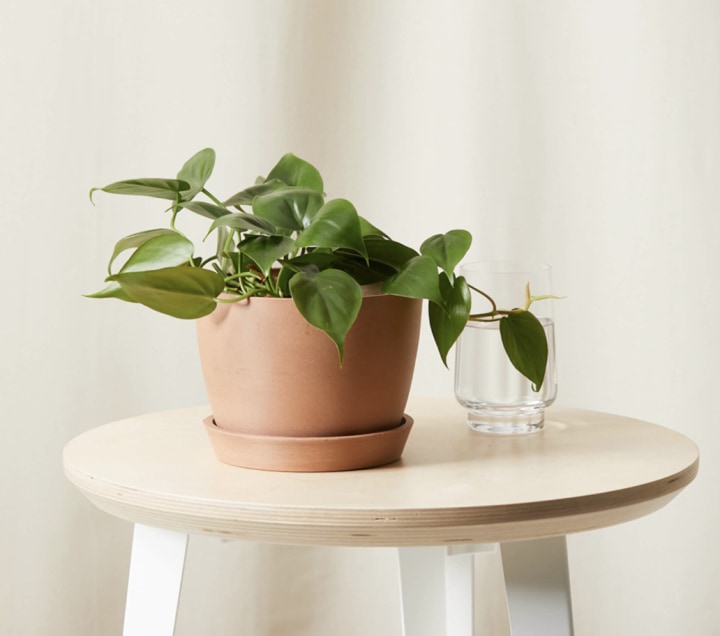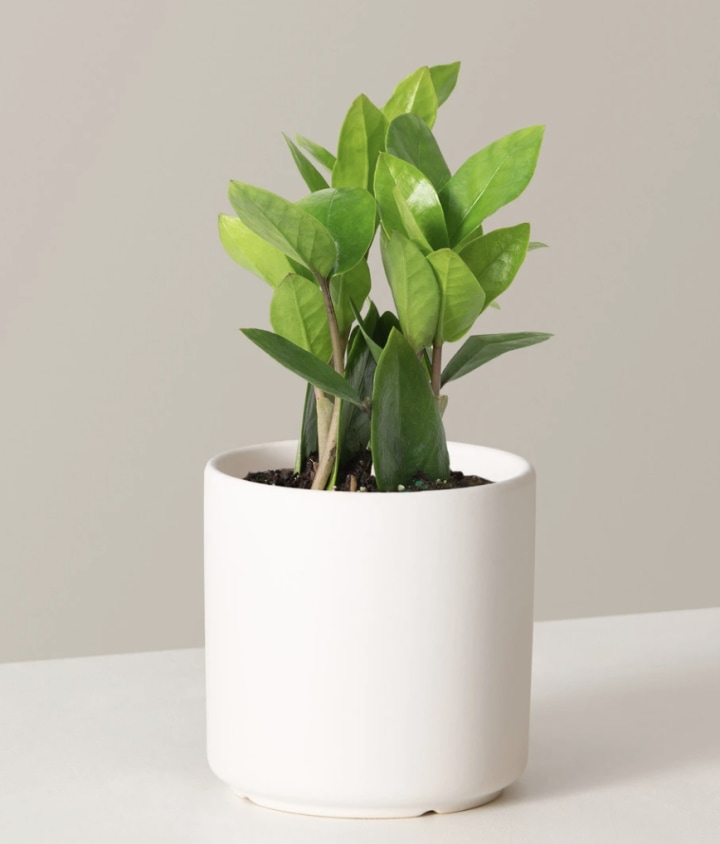Easy to Take Care of Indoor Plants
Starting an at-home garden can be intimidating, but there are plenty of reasons why it's worthwhile to add some green to your space. Studies have shown that indoor plants can lower your stress levels, elevate your mood and improve your concentration and productivity — all of which is important as you continue to live and work at home.
SKIP AHEAD How to pick the right indoor plant | How to care for indoor plants
You don't need a ton of time, space or even light to grow your own indoor garden, either. In fact, some plants prefer a low level of light and infrequent watering. If you live in an apartment or home with little natural light or just want something a bit more low maintenance, there are many houseplants for you to choose from. We consulted gardening experts to learn about the best indoor plants for various uses and gathered some tips on how to get your green space going.
Best low-maintenance indoor plants
Ready to start growing? Here are some of the best low-maintenance indoor plants, according to the experts we spoke to, as well as other plants recommended by Select staff.
Snake Plant
The Snake Plant, recommended by Aaron Steil, a consumer horticulture extension specialist at Iowa State University, is a succulent plant that tolerates medium to bright light. It can help purify indoor air by filtering toxins like formaldehyde, xylene and toluene, according to Marino. If you travel frequently, this plant might be a good option: It can go without water for two to three weeks, or until its leaves start to wrinkle.

Chinese Money Plant
Steil recommended the Chinese Money Plant, noting that it "readily produces offsets that are easy to propagate." Of the offsets, Steil remarked "In no time you'll be sharing them with friends." It has broad, round leaves that start to droop when the plant needs water. The plant does best with bright, but indirect light.

Lucky Bamboo Plant
Select writer Gabriella DePinho recommended the lucky bamboo plant because it's easy to care for — she said that you just need to monitor the water level: When you can't see the water over the rocks in the pot, it's time to refill. She says that since it should be kept from direct sunlight, it should grow well indoors. "Right now she's in my kitchen," DePinho said "but she also thrived in my not so well lit senior year dorm room."

Jade Plant
Steil recommended the plant for growing indoors because it grows well with indirect medium to bright light. It has thicker leaves and doesn't need to be watered often. Steil also says that the plant "propagates easily," so you can get several plants from just one purchase — if you take care of it properly.

Philodendron
The low-maintenance Philodendron has heart-shaped leaves and quick-growing trailing vines. Its long, lush vines can be easily pruned and propagated in water when they get too long. This plant prefers medium to bright indirect light (though it can tolerate low light) with watering every one to two weeks. Select writer Mili Godio's philodendron sits behind her on Zoom meetings, and she says it's "thriving without me having to do much."

Dracaena Gold Star
Berg recommended this plant because it's easy to take care of — provided that you don't over water it. The plant can also tolerate low light. Berg also the Dracaena Gold Star because of its colorful appearance. It has striped, long green leaves and can grow tall — it's a good larger plant for a beginner, according to the retailer, Bloomscape.

Money Tree
Of the half-dozen plants that Select editor Morgan Greenwald has in her house — to her husband's dismay — she says that her money tree is "easily" her favorite. Greenwald waters her plant every three weeks (or whenever the soil gets dry) and says that the plant is thriving, with new leaves growing "constantly," to the point where she has to trim the older leaves every three weeks to make room for new growth. According to the retailer, Bloomscape, the plant is often used for Feng Shui, is pet-friendly and can help purify the air in your room.

Cast-Iron Plant
Steil recommended the Cast Iron Plant because it can grow well with low light levels. The plant has deep green leaves and can grow both indoors and outdoors, according to plant retailer Woodies Garden Goods.

Pothos
Godio and Jean Berg, general manager of Philips Interior Plants & Displays, recommended the Pothos, which has quick-growing vines that can reach over 10 feet long. These plants, which can thrive in almost any type of indoor space, prefer medium to bright indirect light, but can also tolerate low light. You can water your Pothos every one to two weeks, and if the vines get too long, just give them a quick prune.

ZZ Plant
Steil and Greenwald recommended the ZZ Plant, a drought-tolerant succulent that's native to arid environments. You can leave it in a spot that has medium indirect light and water it about every three weeks, when the potting soil is completely dry.

Aloe Vera
Steil recommended the Aloe plant because it can tolerate dry conditions and can grow in many different light conditions, though Steil says the plant does best in bright, indirect light. The spiky-looking succulent also contains a clear liquid that can soothe sunburns.

How to shop for the right indoor plant
Before you decide which plants to buy, evaluate your space for factors like light, temperature, airflow and humidity levels, which Berg says dictate plant growing conditions. If you aren't sure how much light your space has, decide which room you're going to place the plant in and figure out which direction your windows face, how much artificial light there is and if there's anything outside that could block sunlight, said Berg. It's also important to determine if the sun will hit the plants directly — such as through a south-facing window — or indirectly.
While you may be spending a lot of time at home right now, you should also think about how often you'll be away in the future. Like pets, plants need caring for — even low-maintenance ones. Most can go a week or two without water, but if you travel for long stretches, you may want to consider a plant that thrives in dry conditions. Price is another thing to consider: While most indoor plants are relatively affordable, costs vary depending on variety, size, health and where the plant was grown.
When shopping, pay attention to how the plant itself looks. You'll want a healthy, stocky plant with green leaves along healthy stems, said Steil. Avoid plants with brown spots and excessively wet or dry soil.
How to care for indoor plants
Being a plant parent isn't easy, so the most important thing is to be patient as you tend to your plants. "When looking to start growing plants indoors, start small and start with those plants that are more common and easy to grow — they are common for a reason," Steil said. "Once you have success with those plants, you can grow your indoor garden. Remember it will take a few weeks for a new houseplant to adjust to the environmental conditions of your home, so give it some time and don't be too worried if a leaf or two drops off."
Steil also provided a few more tips to help your indoor plants thrive:
- "Don't be afraid to move houseplants around in your home," he told us. "Leaf drop, discoloration or spindly/lanky new growth are all signs that the plant may be growing in conditions that are too dark," Steil said. If you notice any of those, move the plant to a brighter location. Eventually, possibly through trial and error, a plant will thrive in the right spot with its ideal light.
- Avoid watering on a set schedule. Steil said that you'll likely over- or under-water your plants this way. He recommends checking the soil moisture with your finger on a regular basis to decide whether your plant needs water. "If it feels dry, water. If it feels wet, wait to water. If you are questioning it, wait one more day!" he told us.
Catch up on Select's in-depth coverage of personal finance, tech and tools, wellness and more, and follow us on Facebook, Instagram and Twitter to stay up to date.
Source: https://www.nbcnews.com/select/shopping/best-low-maintenance-plants-ncna1276969
Post a Comment for "Easy to Take Care of Indoor Plants"